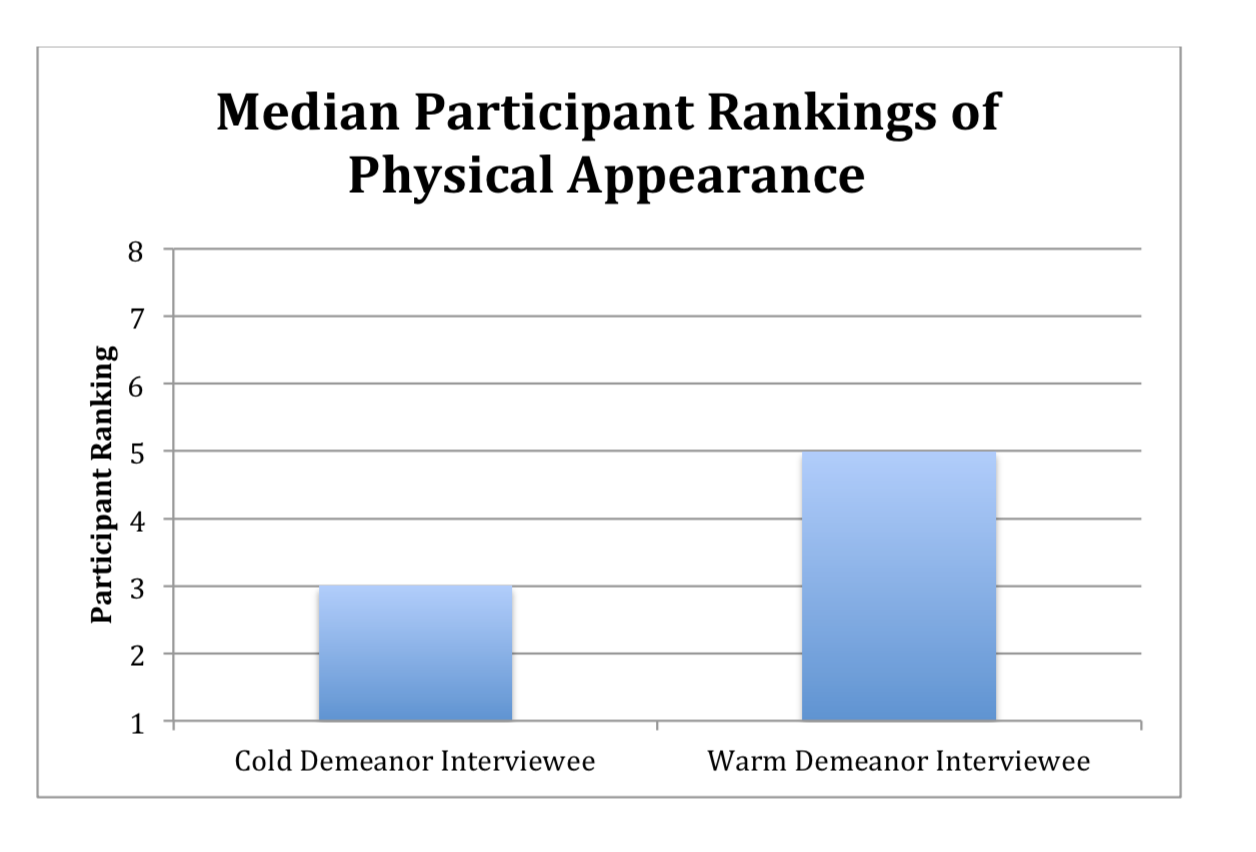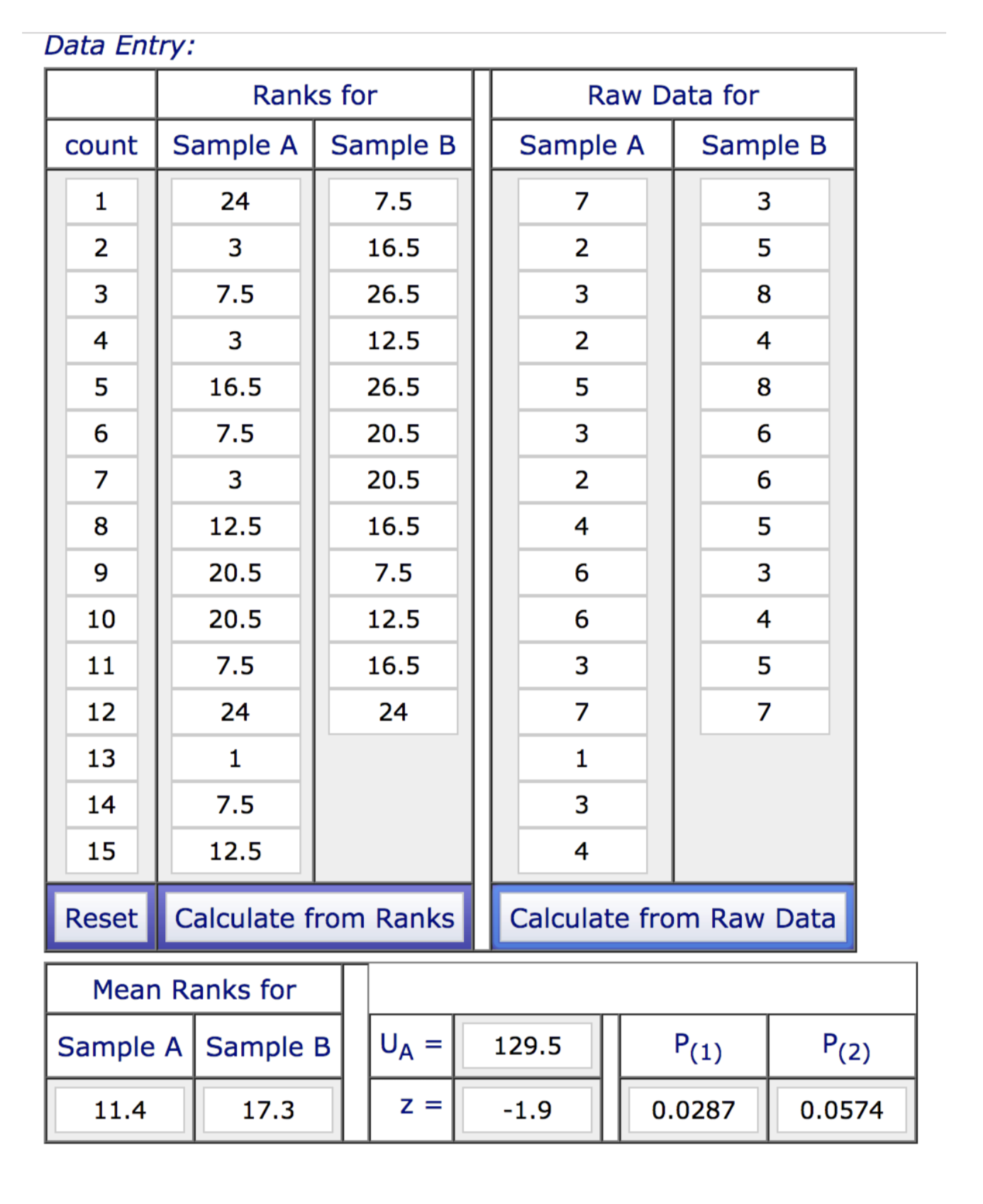IA marking: Sample 4
 The sample below is based on Nisbett and Wilson's (1977) study of the halo effect.
The sample below is based on Nisbett and Wilson's (1977) study of the halo effect.
The sample is based on a student's work, but is heavily edited and changes have been made to illustrate different facets of the IA.
The appendices do not include the letter of consent, materials, or the debriefing notes. The appendices do include the raw data and statistical calculations. Failure to include raw data or statistical calculations is penalized in the analysis.
Introduction
In the cognitive approach, researchers believe our thinking and decision making is influenced by heuristics. Heuristics are mental shortcuts based on past experiences that we use to make decisions quickly and efficiently. We do this because we are cognitive misers and this takes less energy than thinking through each situation individually. In addition, it may be because of cognitive load - that is, we have so much to think about, it is difficult to make "space" to think through a decision, so we take a short-cut. A final reason that we use heuristics is because of ego depletion - that is, we make a quick decision because we see the task as too difficult or it somehow threatens our sense of self. Heuristics are useful as they often lead to correct conclusions because they provide us with a ‘probable’ answer. However, using heuristics can result in consistent but sometimes-inaccurate thinking and decision-making called cognitive biases (Crane, 2017). One such cognitive bias is the Halo Effect. The Halo Effect is a cognitive bias where an impression formed by a single trait or characteristic influences judgments or ratings of unrelated factors (Neugaard, 2016). This means that someone who is seen as likable will also be perceived as better looking, more confident and more intelligent than someone seen as unlikable. We wanted to see if the demeanor of an interviewee would affect their attractiveness.
This study is a replication of Nisbett & Wilson's (1977) study of the Halo Effect. The aim is to investigate how rankings of an interviewee’s appearance by international high school students will differ based on the demeanor of the interviewee. This is interesting to investigate in high school students as the Halo Effect partially explains how we judge other people. Becoming more aware of how we perceive others may help us avoid our biases and form more objective opinions.
The independent variable is the demeanor of the interviewee shown to international high school students. There are two experimental conditions: a warm demeanor interview and a cold demeanor interview.
The dependent variable is the median attraction rating of international high school students on the questionnaire. This will be measured on an 8-point scale, with 1 being the least attractive rating possible and 8 being the most attractive rating.
The null hypothesis is that there will be no significant difference in the median rankings of interviewee attraction by international high school students between the warm demeanor interview and the cold demeanor interview.
The research hypothesis is that the median ranking of interviewee attraction by international high school students will be significantly higher for the warm demeanor than the cold demeanor interview.
Exploration
The experiment is an independent samples design. Independent samples was chosen since a repeated measures design would not have worked, as participants would be rating the same teacher with a different demeanor twice. Also, with a repeated measures design, participants could have exhibited demand characteristics, as they would most likely have figured out the aim of the study.
The independent variable is the demeanor of the filmed interviewee presented to the participants. This interviewee was said to be a potential future teacher at the school. The dependent variable is the median of participant ratings of the interviewee’s physical appearance. Physical appearance was selected as the dependent variable because participants should have been able to make an independent judgment of this trait simply by looking at the interviewee. This was measured with a questionnaire (see appendix iii) on a scale from 1 – 8, with 8 being the most attractive rating and 1 being the least attractive rating.
The sample consisted of two international school 10th grade homerooms. An opportunity sample was used, as these classes were already in place before experimentation. This was done for convenience, but also since all participants were 10th graders, they would all have a similar amount of experience with teachers and the interview presented was of a teacher. They also have not yet studied psychology. There were a total of 27 participants - 9 males and 18 females. One group had 15 participants, with 10 females and 5 males, and the other 12, with 8 females and 4 males.
Interviews were taken from previous replications of Nisbett and Wilson (1977) done by other IB psychology students. We used an interview with a relatively bland female teacher as a control to see if both advisory groups would rate this teacher approximately the same and to see if they understood our directions. For the experimental interview, the same male teacher was presented in a cold demeanor to one group and a warm demeanor to the other. These videos were chosen since they presented the same teacher in two different demeanors, so teacher appearance would be controlled. They also asked the same questions in both interviews and the videos were relatively brief, so participants would not get bored. The questionnaires given to students contained five questions - four of which were filler questions. The filler questions asked for ratings of kindness, intelligence, likeability, and confidence and the experimental question asked for ratings of appearance. At the end of the questionnaire, there was a yes/no question as to whether or not students would like to be taught by this teacher.
A coin was flipped to randomly allocate groups to the warm or cold demeanor interview. In each condition, participants were read standardized instructions (see appendix ii) to control for differences in researcher behavior. At the beginning of the experiment, participants signed an informed consent form (see appendix i). Then the first filmed interview was presented to participants. This was a control interview, showed to both groups. Following this interview, participants were given questionnaires and asked to rate this teacher for the traits mentioned above. These ratings were used to determine that both groups rated the control teacher similarly, to control for participant variability. After the first questionnaire, participants were presented with the experimental interview and given the same questionnaire to rate the teacher. The answer to the physical appearance question on the questionnaire for the second teacher interview was used for data analysis.
Participants were deceived in being told they were rating potential future teachers. However, participants were debriefed after the experiment of the findings and purpose of the experiment.
Analysis
Participants' answers from questionnaires were assigned a numerical value from 1 – 8 based on selected answer choice. 1 was the lowest rank for physical appearance and 8, the highest rank.
Table 1. Central Tendency of Physical Attraction Ratings
| Cold demeanor | Warm demeanor | |
| Mean | 4.16 | 5.58 |
| Median | 3 | 5 |
| Mode | 3 | 5 |
| Standard deviation | 1.92 | 1.72 |
The measure of central tendency used to analyze this data is the median. The median was chosen because the data is ordinal. Additionally, although the answers of 6, 6 and 7 are not mathematical outliers from the cold demeanor group, they differ from most participant responses and are responsible for the mean being higher than the median and mode for this group. Also, the lack of mathematical outliers may be due to the data set restriction, in that participants could not answer higher than 8 or lower than 1.
Standard deviation indicates that both data sets were similarly distributed. The standard deviation was found to be quite large considering all data had to be between 1-8. This indicates a relatively large data spread.
The data shows participants ranked the warm demeanor teacher as more physically attractive than the cold demeanor teacher.

Since our data was ordinal and the sample size was small, a Mann-Whitney test determined whether or not the data was significant. The p-value showed that the data was not significant at p = 0.0574. This means we retain the null hypothesis. It appears that the demeanor of the interviewee had no effect on international high school students’ perceived attraction of the interviewee.
Evaluation
Unlike Nisbett & Wilson (1977), this experiment found participant ratings of physical attractiveness did not differ for the warm demeanor interviewee and the cold demeanor interviewee. This is most likely because the original study lacks temporal validity.
A strength of our design is that with independent samples, we can avoid demand characteristics. Also, the duration of the experiment would be shorter than that of a repeated measures design, meaning boredom would play a lesser role. However, with independent measures and a small sample size, participant variability could influence results. We found from the control interview questionnaires that one group had a median rating of 5 and the other of 6. Although this is not a big difference, it does suggest participant variability could have been a factor.
A strength of our sample was that in using an opportunity sample, we conveniently had two groups of participants from homerooms at our high school. These groups had a similar distribution of males and females and would likely have been representative of their grade level, as we did not select students from a certain class. However, using an opportunity sample was also a limitation of our sample. Many participants did not appear engaged during the experiment and seemed disinterested. This may have impacted the results if participants did not pay attention to the interviews. With a self-selected sample, where participants actively want to participate in the experiment, this would not have been an issue. This would be a modification that would improve this study. Also, another limitation regarding our sample is high school students may have been uncomfortable rating an older teacher’s appearance.
A strength of our materials was the interview videos were well controlled. The same teacher and questions were presented in each video; only the demeanor of the teacher was changed. Although the responses to the questions also differed, this was necessary to convey the difference in demeanor. However, a limitation of our interview videos was they were highly artificial; students may not have noticed the interviewee’s demeanor and body language as much if he had come to speak in person. This also brings up the question of ecological validity. Ideally, we would have a trained actor come in to do the interviews in person. This would be a modification that could improve this study, but would also have made it more difficult to control extraneous variables.
A strength of our procedure is many aspects were well standardized. Researchers read participants' standardized instructions to control for differences in researcher behavior. Both groups were given the same time to answer the questionnaires and interviews were displayed at the front of the room within a PowerPoint for both groups. However, the classroom environment was difficult to control. Although we made most students sit alone to ensure individual ratings, there were only so many seats per classroom and it was hard to enforce complete silence. Also, as mentioned previously, many students appeared bored with the videos and did not pay full attention. It was not possible to control for this and this is a limitation of our procedure that may have impacted results. A possible modification would be to tell participants they will be asked to recall interviewee answers, so they would be motivated to pay attention to the interview.
An extension of this research would be to look at the Halo Effect in different personality traits. Most research surrounding the Halo Effect is regarding physical attractiveness. It would be interesting to study if warmer, friendlier individuals were also seen as more intelligent or hard-working. It would also be worth studying the Halo Effect in a naturalistic setting, not a highly artificial environment with video taped interviews, but with actual physical interaction.
Works cited
Crane, J. (2018). IB Psychology - Biases in thinking and decision making. Retrieved December 1, 2018, from http://www.student.thinkib.net/psychology/page/22797/biases-in-thinking-and-decision-making.
Neugaard, B. (2016, August 15). Halo effect. Retrieved December 1, 2018, from https://www.britannica.com/science/halo-effect
Nisbett, R. E., & Wilson, T. D. (1977). The Halo Effect: Evidence for Unconscious Alteration of Judgements. 4th ed. vol 35. Retrieved December 1, 2018, from https://deepblue.lib.umich.edu/bitstream/handle/2027.42/92158/TheHaloEffect.pdf
Interview Videos
Bob The Snale. (2012, March 06). Retrieved December 03, 2018, from https://www.youtube.com/watch?v=TTexr_s6PAc
Kidder, C. (2015, October 11). Retrieved December 03, 2018, from https://www.youtube.com/watch?v=xpYbMl030Qw
Kidder, C. (2015, October 11). Retrieved December 03, 2018, from https://www.youtube.com/watch?v=VdKytqk1Rk0
Appendix i. Raw data
Table 1. Levels of attraction out of 8 for warm and cold conditions
| Warm | Cold |
| 3 | 7 |
| 5 | 2 |
| 8 | 3 |
| 4 | 2 |
| 8 | 5 |
| 6 | 3 |
| 6 | 2 |
| 5 | 4 |
| 3 | 6 |
| 7 | 6 |
| 5 | 3 |
| 7 | 7 |
| 1 | |
| 3 | |
| 4 |
Appendix ii. Calculation of the Mann Whitney

Assessment
Introduction (max 6 marks)
The aim of the investigation is stated and there is an attempt to explain the relevance, but this could be more developed. The target population is clearly identified (5 marks). There is no theory or model outlined. Instead, heuristics are addressed. The "Halo effect" is not a theory but an example of System 1 thinking. The Dual Processing Model should have been addressed. (2 marks). The independent and dependent variables are stated and operationalized in the null and research hypotheses. Both hypotheses are correctly stated (6 marks).
Total: 4 marks
Exploration (max 4 marks)
The research design is explained (4 marks). The sampling technique is explained (4 marks). The choice of participants is explained, but the age of the participants is not identified. "Tenth grade" is not enough. This also means it is not clear whether it was required to obtain parental consent or not. (3 marks) Controlled variables are explained. The use of a pilot group to test to see if the standardized directions made sense is a good example of a control (4 marks). The choice of materials is described but could be explained in a bit more detail (3 marks).
Total: 4 marks
Analysis (max 6 marks)
The choice of the descriptive stats is problematic. The median is an appropriate choice for ordinal data. The standard deviation, however, is not relevant; the interquartile range should have been used. The mode is also not relevant. The inferential statistics are not correctly applied. The hypothesis is a one-tailed hypothesis, but the cited p-value is for a two-tailed test (3 marks). The graph is correctly presented and addresses the hypothesis (6 marks). The statistical findings are not correctly interpreted with regard to the data and linked to the hypothesis (4 marks).
Total: 4 marks
Evaluation (max 6 marks)
The findings of the student’s investigation are not described with reference to the background theory or model. (1 mark). Strengths and limitations of the design, sample, and procedure are stated and explained, and mostly relevant to the investigation (5 marks). Modifications are described but not explicitly linked to the limitations of the student’s investigation. Suggestions for modifications are rather superficial (3 marks).
Total: 3 marks
Total marks
Total: 15 marks
IB 6

 IB Docs (2) Team
IB Docs (2) Team
